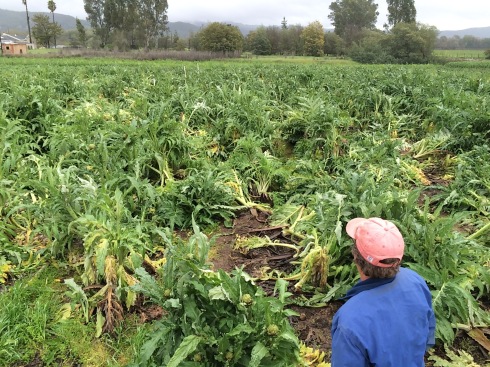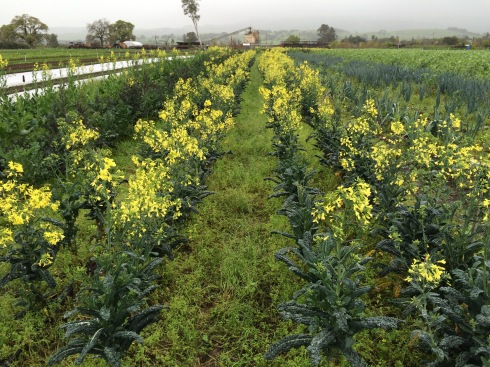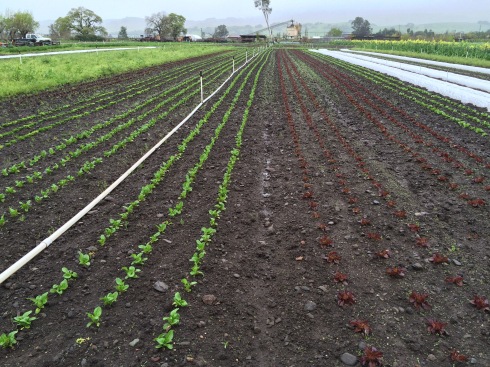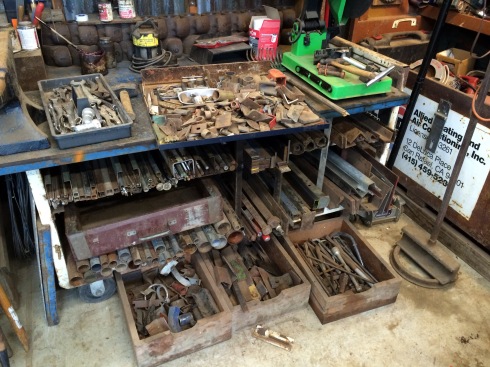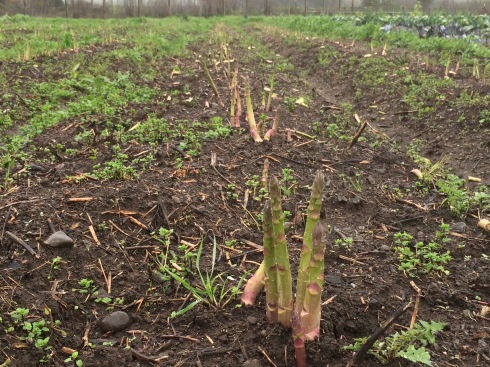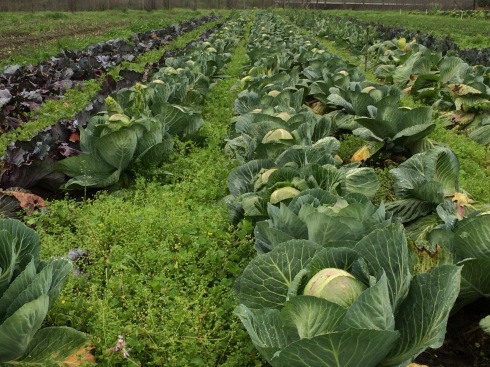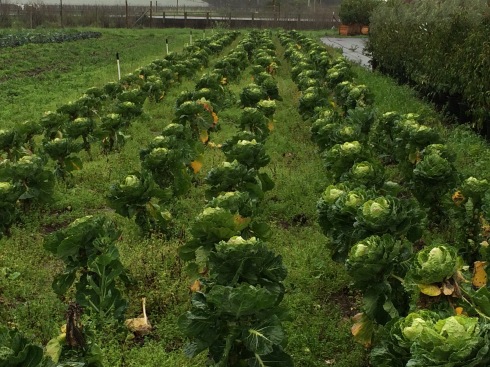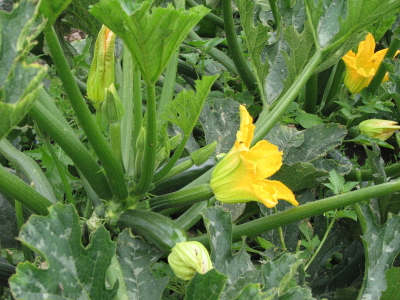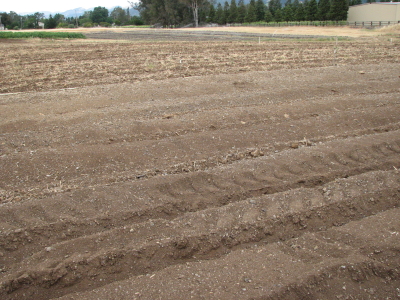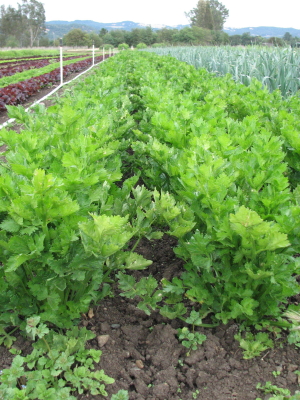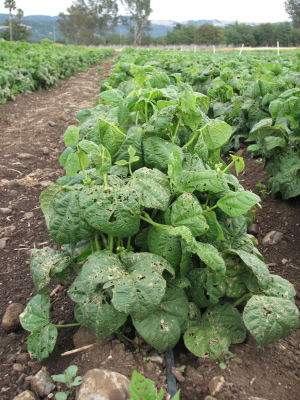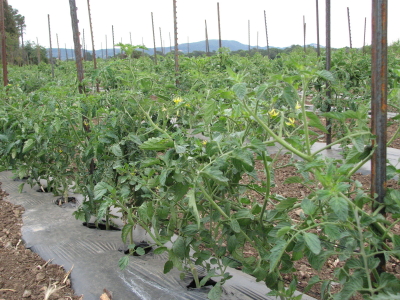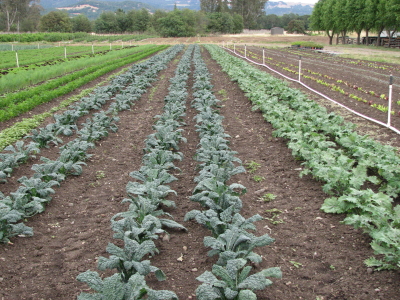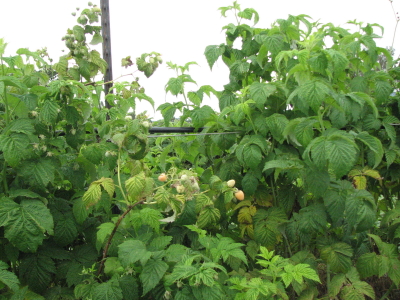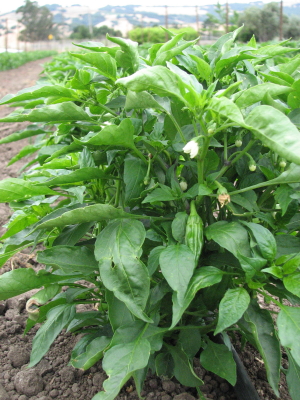It’s the green glow, post-rain flush. Nothing like what happens after rain in the garden. Just look outside. Take a walk. Look at the ground. Weeds and grasses are springing to life with all the vigor they can muster. Somehow the weeds know the difference between rain and irrigation. Maybe it’s the change of weather that prompts all of this activity. In fact, if you look closely, the weeds are entirely different than just a month ago. So it’s time to cultivate EVERYWHERE at once.
The cultivating tools have been out in force, wheel hoes, stirrup hoes, and the cultivating tractor. It has to be done now, before they gain on the crops too much. Every once-in-a-while, we’ll lose a crop to weed pressure. And conditions like last week are a perfect storm for that possibility. If the ground stays wet too long the weeds will get to a size that it’s not economically practical to do anything except start over.

These rows of arugula and Easter Egg radish are wheelhoed for the first time. We'll do this at least one more time and then some hand weeding.
Walking around the fields this morning, I was struck by how much had been cleaned up. I’m amazed how fast the crew jumps on these issues. As soon as they are finished picking or packing, Silvano, Servando, Austin and Orlando have hoes over their shoulders and are headed to another bed.

This was peppers only two weeks ago.
There are also many empty beds, with the spaghetti of drip tape gathered into furrows, to be moved later. The obvious weed growth on these open stretches isn’t important at all. And in some open fields, the grasses are coming up in distinct rows, sure sign of the tractor mounted cover crop seeder. This crop of bell beans, winter peas, vetch, barley and oats will be tilled in sometime in the spring. There is nothing like cover crop to build the soil fertility and structure.

We're happy to have the cover crop pop to life. The oats and barley always show first.

The soil is littered with a colorful juicy orbs filled with seeds. Imagine how many tomato seedlings will be here in the springtime!
This was the first crop of cherry tomatoes planted outside in April. The trellis has come down, so did all the plants. They’ll lay here until the stakes are pulled and then the plants will be chopped and incorporated into beds for either cover crop or or early 2012 plantings.
Little problems always come up in the course of working with machinery that can stop everything. Paul was transporting a load of compost to the new front field when the wheel on the spreader broke. Luckily he was on the road and able to jack it up and re-weld the break.

Compost was spread on some open ground before the wheel interruption.


